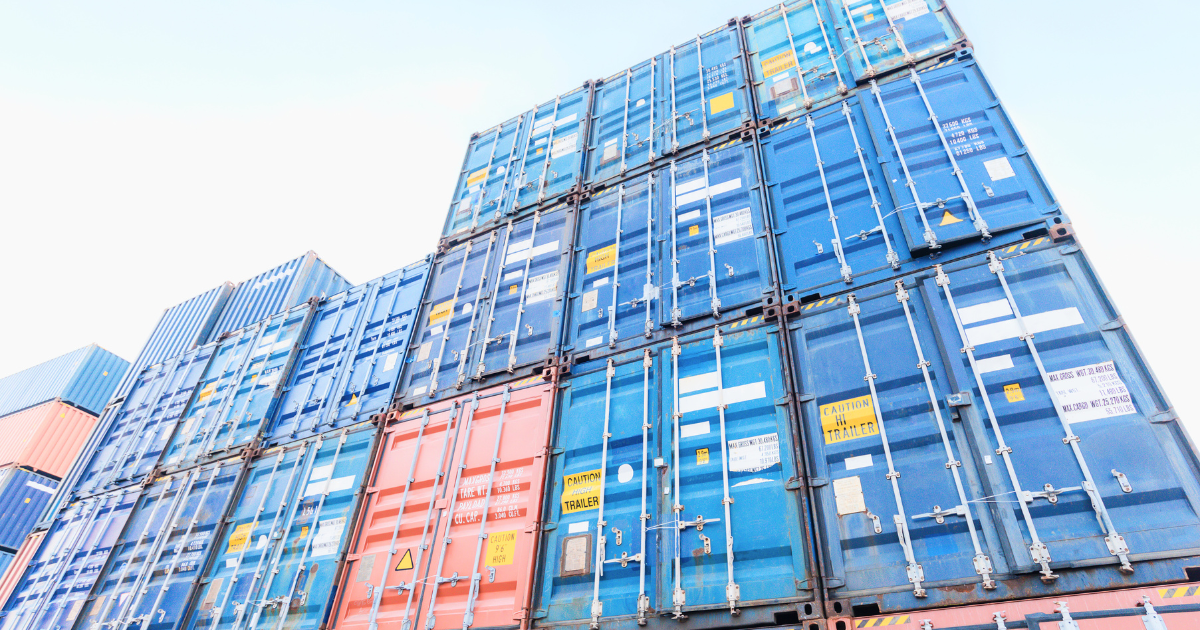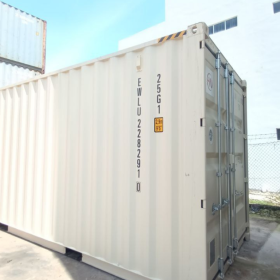Urban landscapes around the world are evolving rapidly, and Thailand is no exception. As cities expand and the demand for innovative, sustainable, and affordable building solutions increases, shipping container architecture has emerged as a game-changer. This blog delves into the transformative potential of shipping container architecture in Thailand, highlighting its benefits, applications, and future prospects.

The Rise of Shipping Container Architecture
Shipping container architecture involves repurposing steel shipping containers into functional living and commercial spaces. This innovative approach to construction offers several advantages, including cost-effectiveness, durability, and environmental sustainability. In Thailand, where urbanization is accelerating, shipping container architecture is gaining traction as a versatile and eco-friendly building solution.
Sustainable and Eco-Friendly Building Solutions
One of the most compelling reasons for the growing popularity of shipping container architecture in Thailand is its sustainability. Traditional construction methods often involve significant environmental impact, from the extraction of raw materials to the generation of construction waste. In contrast, shipping containers are repurposed, reducing the need for new materials and minimizing waste. Additionally, containers can be outfitted with energy-efficient features such as solar panels, green roofs, and rainwater harvesting systems, further enhancing their eco-friendly credentials.
Cost-Effective and Efficient Construction
The affordability of shipping container architecture is another key factor driving its adoption in Thailand. Building with containers is typically less expensive than traditional construction, as the primary structure is already in place. This reduces both material costs and construction time. For entrepreneurs and homeowners in Thailand, this means faster project completion and significant cost savings.
Versatile Applications
Shipping container architecture’s versatility makes it suitable for a wide range of applications, from residential homes to commercial spaces. Here are some of the most popular uses:
- Residential Homes: Container homes offer a modern and stylish alternative to traditional housing. They can be customized to meet individual needs and preferences, making them an attractive option for homeowners seeking unique and affordable living spaces.
- Commercial Spaces: From pop-up shops to permanent retail outlets, shipping containers provide a flexible and eye-catching solution for businesses. Their modular nature allows for easy expansion and reconfiguration, making them ideal for dynamic commercial environments.
- Office Spaces: As remote work becomes more prevalent, there is a growing demand for adaptable office spaces. Container offices can be easily transported and set up in various locations, providing a convenient and cost-effective solution for businesses.
- Hospitality and Tourism: In the hospitality industry, container hotels and hostels are gaining popularity. These structures offer a unique and memorable experience for guests, while also being quick and affordable to construct.
- Community Projects: Shipping containers are also being used for community projects such as schools, clinics, and community centers. Their affordability and durability make them ideal for addressing the infrastructure needs of underserved communities.
Case Studies: Shipping Container Projects in Thailand
Several innovative shipping container projects in Thailand showcase the potential of this construction method:
- The Box Office Bangkok: This mixed-use development in Bangkok features office spaces, retail outlets, and a café, all housed in repurposed shipping containers. The project highlights the aesthetic appeal and functional versatility of container architecture.
- Container Hostel in Chiang Mai: Offering budget-friendly accommodation in a trendy setting, this container hostel attracts tourists seeking a unique lodging experience. Its modular design allows for easy expansion and customization.
- Community Center in Pattaya: Built using shipping containers, this community center provides essential services to local residents, including educational programs and healthcare facilities. The project demonstrates how container architecture can address social needs in a cost-effective manner.
The Future of Shipping Container Architecture in Thailand
As Thailand continues to urbanize, the demand for innovative and sustainable building solutions will only grow. Shipping container architecture is well-positioned to meet this demand, offering a viable alternative to traditional construction methods. With advancements in container modification techniques and growing awareness of environmental sustainability, the future looks bright for container architecture in Thailand.
Conclusion
Shipping container architecture is transforming Thailand’s urban landscape by providing sustainable, affordable, and versatile building solutions. From residential homes to commercial spaces and community projects, the potential applications are vast. As more people and businesses in Thailand recognize the benefits of container architecture, we can expect to see a continued rise in its adoption, helping to shape a more sustainable and innovative urban future.
By focusing on the transformative potential of shipping container architecture in Thailand, this blog aligns with the themes and style of OSG Containers Thailand’s existing content while offering fresh insights and detailed information.





